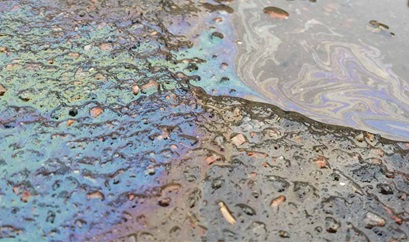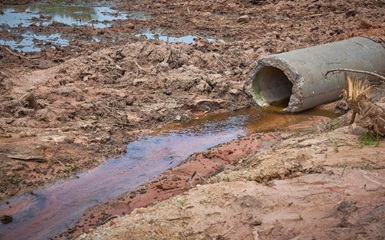Contaminated Site Management (CSM)



Contaminated Site Management (CSM)
Aim of Our Investigations
The aim of contaminated land assessments (Phase I, Phase II, etc.) are to improve and develop conceptual site models which help
identify potential source-pathway-receptor exposure linkages and highlight the potential risk posed to the identified human and
environmental receptors.
Contaminated land assessments are crucial in determining the main contaminants of potential concern (COPCs), the migration
characteristics of the contaminants, the source and extent of the contamination in soil and groundwater and if the contaminants can
be broken down naturally without external intervention.
The data collected during the investigation feed into the remedial options appraisal (ROA) and remedial action plan (RAP) which is
developed to address the site-specific soil and water pollution if it is found that the site contamination poses undue risk to the
environment.
Phase I and II contamination investigations include:
o Risk based assessments
o Remediation studies
o Waste characterisation
o Source and plume delineation
o Due diligence studies
Services offered:
v Phase I Investigations
A Phase I investigation is a quick and inexpensive investigation that highlights possible areas of concern and to gain a better understanding of a site and the site history.
Scope of work for a Phase I includes:
o Desktop Study
o Site interview and walkover with manager
o Determining the site history (spills/leaks or loss)
o Chemical data sheets stored on-site.
o Any previous investigation undertaken on-site.
o Determine if any maps or groundwater chemistry databases are available.
v Phase 1.5 Investigation
This investigation is used to determine where the impact is and what risk the impact poses to human health and the environment.
Scope of work for a Phase 1.5 includes:
o Targeting areas of concern identified during the Phase I
o Buried Utility Clearance of target areas.
o Shallow soil augering
o Soil Vapour Survey with a PID
o Inspecting soil for visual and olfactory signs of contamination
o Submitting soil samples for analysis of Chemical of Concern (CoC)
o Hydrocensus to identify surrounding groundwater users (Receptors)
v Phase II Investigation
Based on the finding of the Phase 1.5 investigation, a Phase II investigation may be recommended if risk was identified for nearby receptors. This investigation includes delineating the contamination plume and collecting information to develop a conceptual site model. Additional soil samples are collected and in most cases groundwater monitoring wells are installed in areas of concern and down-gradient of the suspected source of impact.
Scope of work for a phase II investigation includes:
o Soil sampling and analysis for CoC
o Groundwater sampling and analysis for CoC
o Plume delineation
o Determining biodegradation capacity
o Identifying sources of impact
o Identify theoretical risk posed to receptors.
o Identify potential source-pathway-receptor linkages.
o Develop a Conceptual Site Model (CSM)
v Additional Phase II Investigation
The purpose of the Additional Phase II investigation is to further delineate the contamination plume and improve the conceptual
site model. Additionally, previously identified risk can be rules out or new risk are identified.
Scope of work for an additional phase II investigation includes:
o Continued groundwater sampling and monitoring
o Further delineation of the contamination plume
o Determining the interconnectivity of different aquifer systems
o Determine indoor inhalation risk.
o Determine the age of impact.
o Determine the mobility of the contamination and the potential for recovery.
o Further develop the Conceptual Site Model
o Identify current S-P-R linkages potentially complete.
v Detailed Quantitative Risk Assessment (DQRA):
Establish site specific target / clean up levels to determine if the site poses a risk to the identified receptors by using site specific information. An analytical model is then used to establish the SSTLs for the different modelled scenarios, such as ingestion of groundwater, leaching of contaminants from impacted soils to site groundwater, direct dermal exposure to contaminated soil and vapour inhalation.
v Remedial Options Appraisal (ROA) and Remedial Action Plan (RAP) Development
Should a site pose a very high risk to receptors after completing an Additional Phase II investigation a DQRA and/or a ROA is undertaken. During the ROA all possible remedial technologies are compared to determine the remedial technology which would be economically feasible, would improve identified impact and would practical based on-site constraints. After all remedial options are compared a remedial technology is recommended in the RAP which lays out the plan to undertake the chosen remedial technology.
v Groundwater monitoring
Groundwater monitoring is followed by the Phase II investigation where low risk is identified to nearby receptors. The purpose of groundwater monitoring is to monitor (a) changes in concentrations of CoC, (b) migration patterns and changes in groundwater flow directions, (c) biodegradation capacities and monitor natural attenuation (MNA) and (d) changes in S-P-R linkages.
The scope of work includes:
o Groundwater Sampling for longer term trend analysis
o Determining Groundwater flow direction
o Calculating current biodegradation capacities and MNA
o Identify S-P-R linkages.
